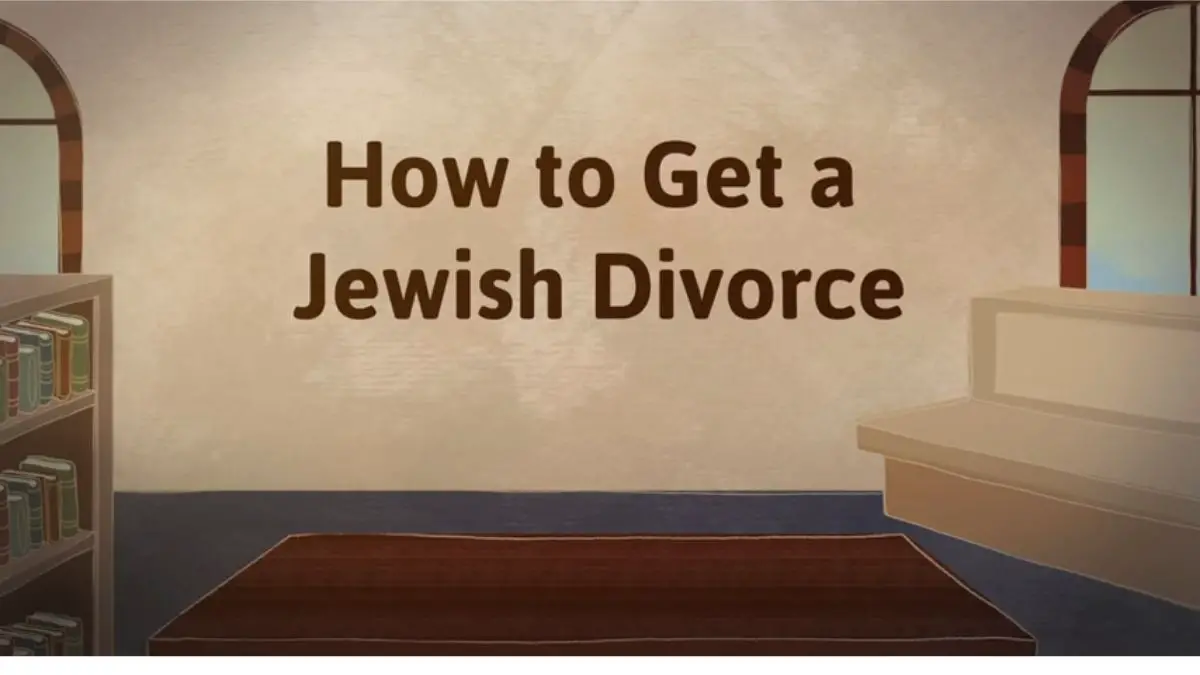Judaism is pragmatic about marriage and has always been realistic about the fact that some marriages may end in divorce. The Jewish marriage contract makes provisions for what happens in the event of divorce. However, while the ketubah is designed to protect the Jewish woman, the rules of divorce are definitely lopsided in favor of the man.
Under Jewish law, a woman cannot commence divorce proceedings, yet a man can divorce his wife for any reason or no reason at all. (Though if the husband is unable to provide a rational reason, the rabbi will suggest counseling or reconsideration.) There are also cases in which a man must divorce his wife, regardless of whether he wants to, for example, if she has committed adultery. Though it may seem easy for a man to secure a divorce, the truth is that the process is far from simple.
In traditional Judaism, a marriage between Jew and Gentile is not an issue or open to question. It is forbidden, and that’s that. Some reasons are spiritual, such as the notion that a Jewish marriage reunites two parts of the same soul. How can it be possible for one of the halves to be non-Jewish?
This prohibition also stems from more practical considerations. For one thing, there is the matter of the viability of the Jewish people. It would be difficult to remain a distinct religious and ethnic group if intermarriage was widespread. In the United States, where the intermarriage rate is 50 percent, only a quarter of children born in these marriages are raised as Jews. The Jewish population in the United States is actually decreasing.
Nonetheless, interfaith marriages have existed all through history and cannot be ignored. Although the Reform and Reconstructionist branches of Judaism do not encourage intermarriages, they have adopted a more accepting approach. If the non-Jewish bride or groom chooses not to convert, there is always the option of having a joint-faith ceremony with clergy members of both faiths present. However, under these circumstances, it is more difficult to secure the services of a rabbi.
Bear in mind that the conversion process selected determines the type of rabbi who will officiate and what branch of Judaism will recognize the marriage. The Orthodox will acknowledge a marriage and an Orthodox rabbi will officiate at the ceremony only if the conversion was consistent with Orthodox requirements.
The Torah “Bill of Divorce”
In the Torah, a divorce is accomplished by writing a bill of divorce called a sefer k’ritut (scroll of cutting off), delivering it to the wife, and sending her away. In fact, the Hebrew word for divorce is gerushin, a term that comes from the Hebrew verb “to send away.” Today, the Jewish divorce is known as a get, a “bill of divorce” in Hebrew.
The procedures involved in obtaining a get are complicated. Although the woman must be provided for financially, once again, the laws generally favor the husband. However, over the years, efforts have been made to bring greater equality into the process. For example, while only a man can initiate a divorce, it is now necessary for the wife to agree to it.
Judaism’s particular attitude to divorce has led to another problem. If a man deserts his wife or disappears and no proof of his death exists, his wife technically remains married—since a woman cannot initiate a divorce. A woman in such a situation is referred to as agunah (anchored). She cannot remarry because, in the event her husband is alive, the rabbis do not want to have condoned an adulterous marriage.
In order to be divorced after having been married according to the laws and customs of Judaism, the Orthodox and Conservative movements require that a get be obtained. Reform and Reconstructionist Judaism, on the other hand, generally recognize a civil decree.
Jewish Divorce Process
Just as Judaism offers rituals to make marriage sacred, when divorce is necessary, Judaism also provides a sacred context.
Most Rabbis do this with a Jewish bill of divorce, a Get. Notably the Reform movement, and others, don’t require a Get, feeling it’s outdated. Rabbis in these movements sometimes tweak the traditional get, suggest complete alternatives, or offer more contemporary ceremonies.
Sometimes, they’ll still recommend a Get through the Conservative or Orthodox branches of Judaism, to avoid running into future problems, and there are a few. For instance, when entering into a new Jewish marriage, you could be told you were never technically Jewishly divorced, so you need to get in touch with your ex to get a Get – digging up what might be an uncomfortable past.
What is Agunah?
And there’s the problem of the Agunah. In traditional Jewish law, if a husband refuses to give his wife a get, she’s forbidden from remarrying. These issues are messy and complex, but worth reading about – although a little in the weeds for those not concerned with Halacha, or traditional Jewish law.
What is a Get?
It’s a document that says nothing about the marriage or details of why you’re getting divorced. It’s very basic – saying the marriage is over, and the man gives the woman permission to marry whomever she wants.
When the woman physically accepts the Get, she frees the man to marry whomever he wants. Yes, the gender roles are lopsided. The Get process is performed by a specialist Divorce-Rabbi (yep, totally a thing) – Most often the exes go together, but they can go separately, if needed.
The ceremony includes a rabbi, scribe and two witnesses who make up the Rabbinical Court – called a Beit Din. Each party says they’re there of their own free will.
The Scribe then writes the Get and the witnesses sign it. The husband hands the wife the Get and she hands it back to the Rabbi who will often rip it apart. It’s a matter-of-fact ceremony that can potentially save some major religious headaches down the road. After the ceremony, it is customary to wish both people well. With the end of a marriage comes a new beginning to what we hope is a happier future.


